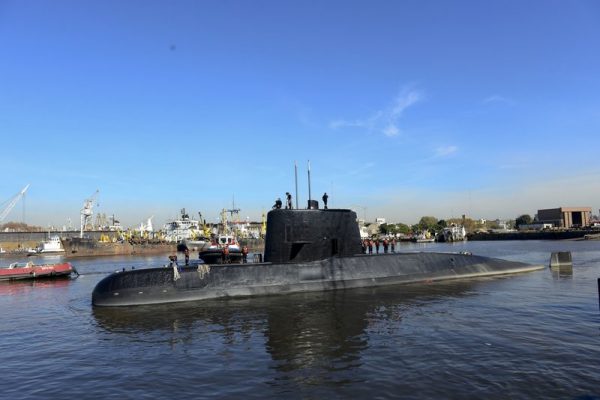 An Argentine military submarine reported a malfunction and was headed back to base when it went missing last week in the South Atlantic, a naval spokesman said on Monday, while storms complicated efforts to find the vessel and its 44-member crew.
An Argentine military submarine reported a malfunction and was headed back to base when it went missing last week in the South Atlantic, a naval spokesman said on Monday, while storms complicated efforts to find the vessel and its 44-member crew.
Hopes for a successful search for the ARA San Juan submarine, which went missing last Wednesday off the Argentine coast, waned on Monday when the navy said satellite calls detected over the weekend did not in fact come from the vessel.
More than a dozen boats and aircraft from Argentina, the United States, Britain, Chile and Brazil joined the search effort. Authorities have mainly been scanning the sea from above, as storms have made it difficult for boats.
Gabriel Galeazzi, a naval commander, told reporters that the submarine had surfaced and reported an electrical problem before it disappeared 268 miles (432 km) off the coast.
“The submarine surfaced and reported a malfunction, which is why its ground command ordered it to return to its naval base at Mar del Plata,” he said.
Galeazzi said it is normal for submarines to suffer system malfunctions. “A warship has a lot of backup systems, to allow it to move from one to another when there is a breakdown,” he said.
Crew members’ relatives gathered at the Mar del Plata naval base, waiting for news.
Intermittent satellite communications had been detected on Saturday and the navy had said they were likely to have come from the submarine. But the ARA San Juan in fact sent its last signal on Wednesday, navy spokesman Enrique Balbi said.
The calls that were detected “did not correspond to the satellite phone of the submarine San Juan,” he said on Monday.
‘Routine’ mission
The submarine had been returning from a routine mission to Ushuaia near the southernmost tip of South America, to its base at Mar del Plata, some 400 kilometres (250 miles) south of Buenos Aires.
Among those on board is Argentina’s first female submarine officer, 35-year-old weapons officer Eliana Krawczyk.
It is one of three submarines in the Argentine fleet.
Sixty-five metres (213 feet) long and seven metres (23 feet) wide, it was built by Germany’s Thyssen Nordseewerke and launched in 1983.
It underwent a refit between 2007 and 2014 to extend its usefulness by some 30 years.
(FRANCE 24 with REUTERS and AFP)
Leave a Reply
You must be logged in to post a comment.